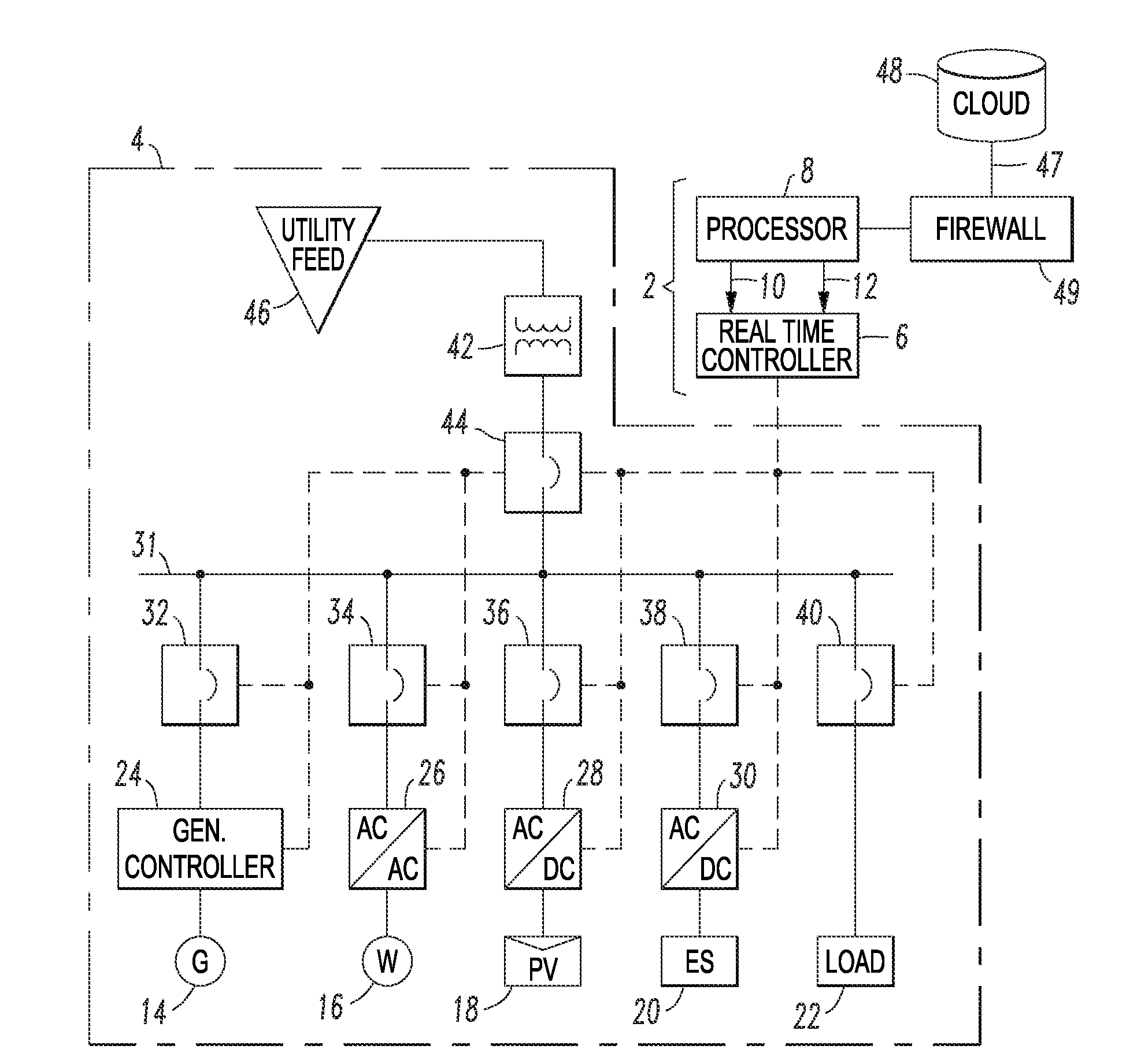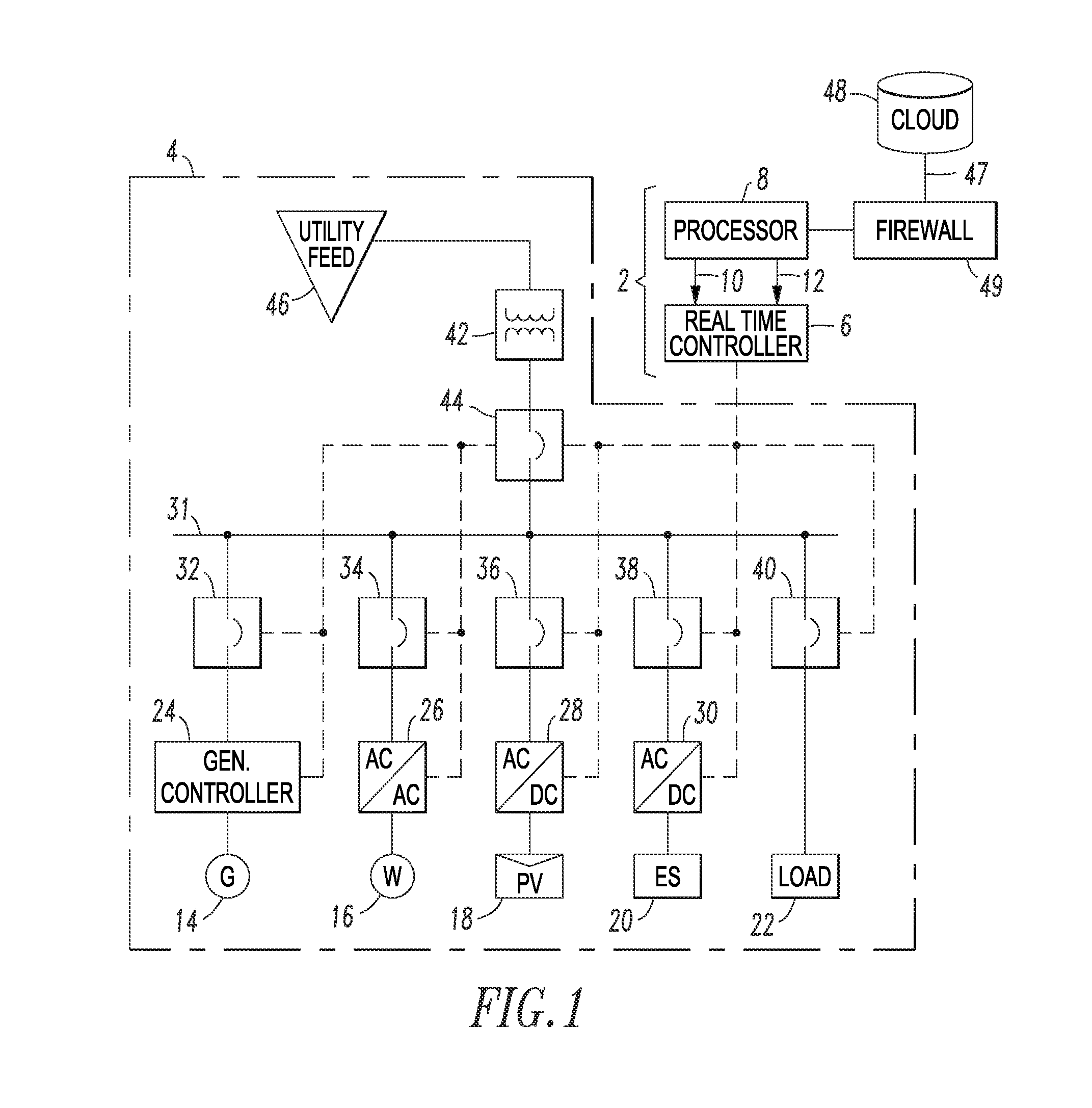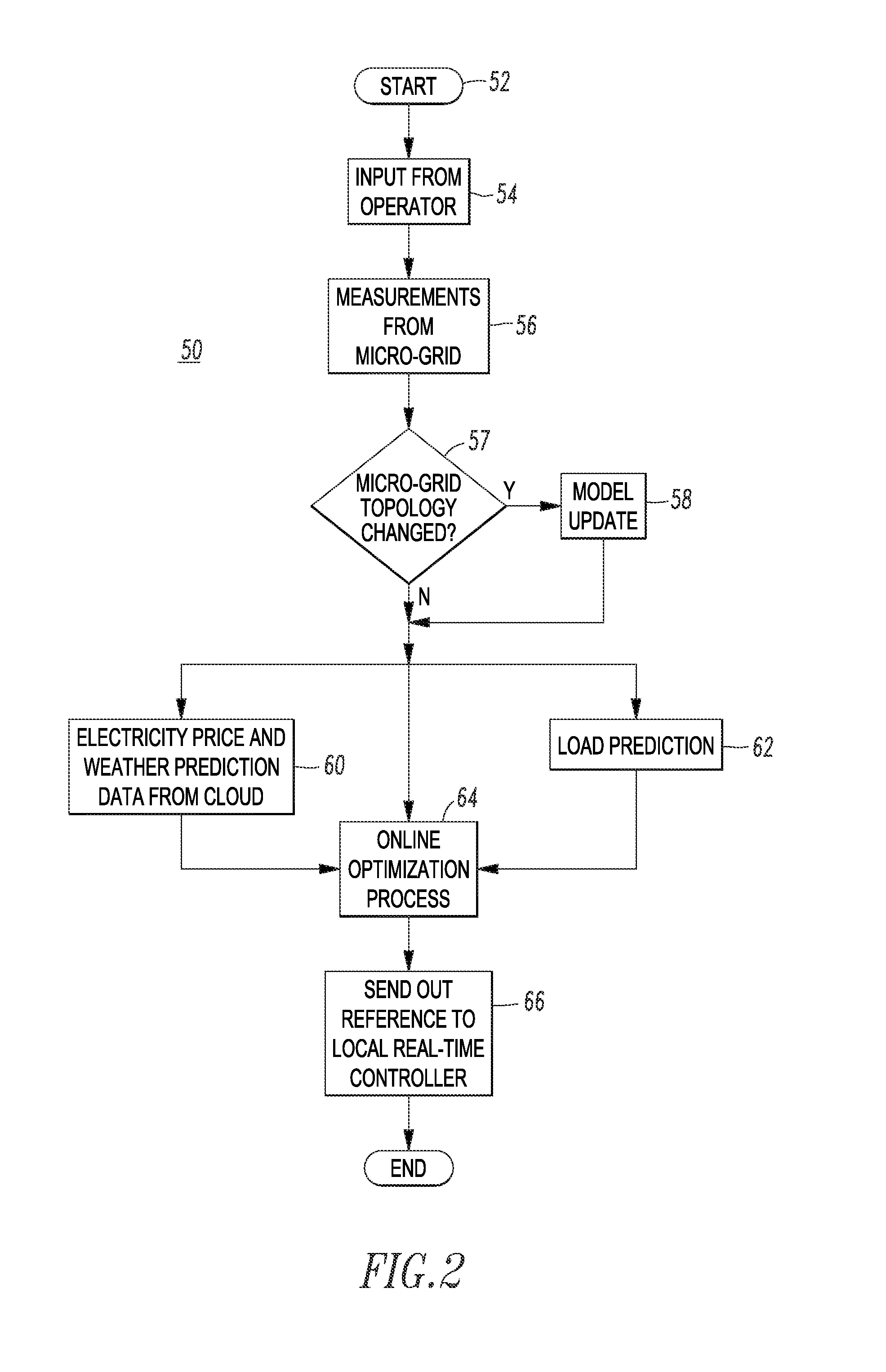Method and apparatus for optimizing a hybrid power system with respect to long-term characteristics by online optimization, and real-time forecasts, prediction or processing
a hybrid power system and optimization method technology, applied in the field of hybrid power systems, can solve the problems of lag in the deployment of energy-efficient technology in buildings, power generation, wind or sun, etc., and achieve the effect of improving performance, maximising efficiency and optimizing performan
- Summary
- Abstract
- Description
- Claims
- Application Information
AI Technical Summary
Benefits of technology
Problems solved by technology
Method used
Image
Examples
example 1
[0058]FIG. 5A shows a simple micro-grid system 120. A wind turbine DG1122 can provide “free” power, but is not available all the time. A power grid DG2124, which is normally always available, does have some cost. A battery DS1126 already has some power stored, and could be charged and discharged based on needs. The loads 128 have to be supplied all the time, from DG1122, DS1126 and / or DG2124. The DG1122 output power limit curve 129 is shown in FIG. 5B. The load curve 130 is shown in FIG. 5C.
[0059]In this example, the goal of control is to meet the load requirement (FIG. 5C) and to minimize the cost. The control freedom includes providing power from DG1122, DG2124 and / or DS1126, charging power to DS1126, switching of DG1122, and / or switching of DS1126.
[0060]If only current information (i.e., no future information) is known, then a rule-based control can be sufficiently tuned. In this example, as shown in FIG. 6A, the power from DG1122 and DS1126 could support the loads 128 of FIG. 5A...
example 2
[0061]Referring to FIGS. 7A-7C, unlike Example 1, if the future load is known (e.g., in many situations, loads can be quite repetitive), then the hybrid MPC as provided by the apparatus 2 of FIG. 1 can further reduce the cost. In FIG. 7A, if the load is known in advance for 6 seconds (e.g., as shown by the plot for predictive optimization, N=6), then more load could be supported by the wind turbine DG1122 of FIG. 5A, which is “free” of cost. The more of the future load that is known (e.g., the prediction horizon is increased from 1 second to 6 seconds), then the cost is less, as is shown in FIG. 7B. However, this also shows that the computation time increases by knowing more of the future information (e.g., as the prediction horizon is similarly increased from 1 second to 6 seconds). FIG. 7A plots the load, the first optimization without future prediction (N=1) (N=1 means only use “current” measurement; N=0 means only use “past” measurement), and the second optimization with future ...
example 3
[0063]Examples of hybrid power system components can include power sources (unidirectional), such as power grids, internal combustion engines (ICEs) and photovoltaic panels; power stores (bidirectional), such as batteries, accumulators and ultra-capacitors that can be both charged and discharged; and power loads (unidirectional), such as torque demands and HVAC. Also, some power grids can be bidirectional and can either source or sink power depending upon conditions in the hybrid power system.
[0064]A micro-grid is a cluster of distributed generation (DG), distributed storage (DS) and loads, serviced by a distribution system, and can operate in a grid-connected mode, an islanded (autonomous) mode, and a ride-though between the two modes. The control objectives for power management include reliability, power quality, and efficiency.
[0065]Micro-grids have an unknown, and somewhat repetitive duty cycle, and are characterized by both continuous and discrete events (e.g., mode switching) ...
PUM
 Login to View More
Login to View More Abstract
Description
Claims
Application Information
 Login to View More
Login to View More - R&D
- Intellectual Property
- Life Sciences
- Materials
- Tech Scout
- Unparalleled Data Quality
- Higher Quality Content
- 60% Fewer Hallucinations
Browse by: Latest US Patents, China's latest patents, Technical Efficacy Thesaurus, Application Domain, Technology Topic, Popular Technical Reports.
© 2025 PatSnap. All rights reserved.Legal|Privacy policy|Modern Slavery Act Transparency Statement|Sitemap|About US| Contact US: help@patsnap.com



